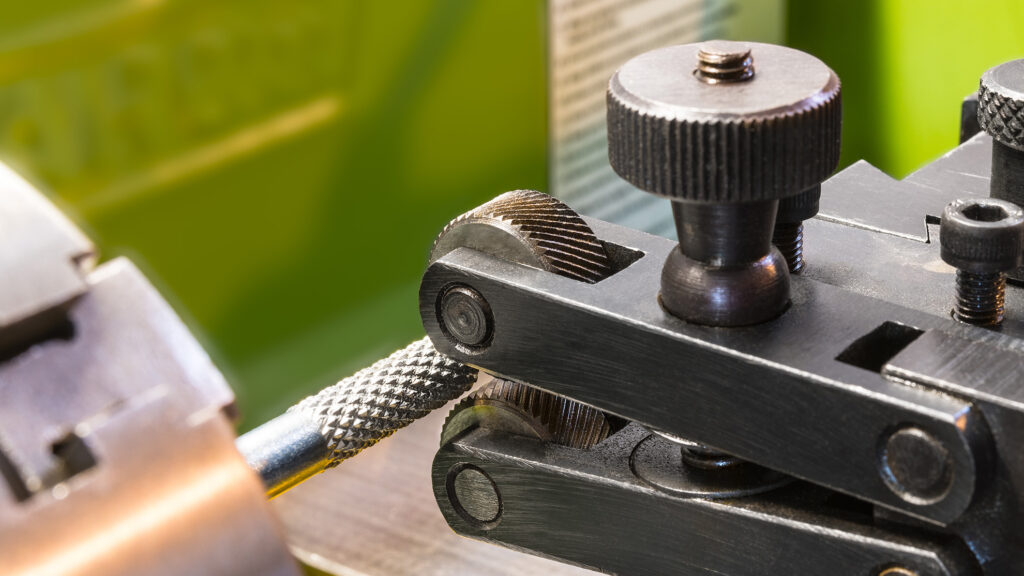Knurling is a manufacturing process used to create a textured pattern of straight, angled, or crossed lines on the surface of a material (usually metal).
It is typically done on a lathe using a hardened tool called a knurling tool that presses against the workpiece as it rotates, displacing the material to form a raised pattern.
Key Points:
- Purpose:
- Provides a better grip on cylindrical parts such as tool handles, knobs, or fasteners.
- Used for aesthetic finishes and decorative purposes.
- Can be used to create an interference fit (slightly oversized surface to press-fit into another part).
- Patterns:
- Straight – parallel lines, often for decorative or functional sliding surfaces.
- Diagonal/Angled – lines at an angle, sometimes for grip.
- Diamond (Cross) – crisscross pattern, most common for non-slip grip.
- Applications:
- Handles of tools (e.g., pliers, screwdrivers).
- Knobs and grips on instruments or machines.
- Metal parts that require press-fit assembly.
In short: Knurling is the process of rolling a patterned tool onto a workpiece to produce textured grips or press-fit surfaces.
1. Setup
- The workpiece (usually a cylindrical bar) is mounted on a lathe.
- A knurling tool (with hardened, patterned rollers) is positioned against the workpiece.
- Common knurling tools have two or more rollers that press simultaneously for balance.
2. Engagement
- The lathe rotates the workpiece.
- The knurling tool is pressed against the surface with controlled pressure/feed.
- The rollers have a pre-cut pattern (straight, diagonal, or diamond).
3. Material Flow
- As the tool rolls along the rotating workpiece:
- The pattern on the rollers impresses into the surface.
- Metal flows plastically (like clay being pressed), forming raised ridges and grooves.
- The resulting pattern is a replica of the knurling tool’s geometry.
4. Result
- The surface now has a textured pattern that:
- Improves grip (non-slip).
- Can slightly increase diameter for press fits.
- Provides a decorative finish.
⚙️ Key Parameters
- Workpiece speed (RPM): Lower than normal turning, to avoid tool chatter.
- Feed rate: Adjusted so the roller pattern meshes evenly—otherwise, you get a “double tracking” defect.
- Pressure: Sufficient to plastically deform the material without excessive wear on tool or workpiece.
✅ In simple terms:
Knurling works by pressing hardened patterned rollers against a rotating workpiece, displacing the metal surface into a matching textured design.



